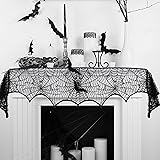Have you ever found yourself admiring the interiors shown in magazines or on television, wondering how such a visually stunning ambiance is created? It often seems like a secret held by professional designers. However, the truth is that much of this dramatic effect is achieved through skillful lighting design. As designer Lori Dennis explains in the accompanying video, transforming your home’s atmosphere with light is entirely possible, even for beginners. It involves understanding a few fundamental principles that elevate a room from merely lit to truly captivating. This guide expands on those expert tips, helping you unlock the potential of your home’s illumination.
Mastering Layers of Light: Beyond the Basic Glow
One of the most crucial elements of achieving sophisticated home lighting is the strategic use of multiple light sources. Relying solely on recessed lights, as is commonly observed in many modern homes, often leaves a room feeling flat and uninviting. When these single-source lights are dimmed, the entire space simply becomes darker, rather than more nuanced or dramatic. Instead, a deliberate approach to layering light is required to create visual interest and a sense of comfort.
Different types of lighting serve distinct purposes, and when combined, they work in harmony to shape a room’s character. General overall lighting, also known as ambient lighting, provides uniform illumination across a space. This is typically achieved through fixtures like ceiling lights, chandeliers, or track lighting. However, this is only the foundation. Task lighting, on the other hand, is specifically directed to facilitate activities such as reading, cooking, or working. Often, this includes floor lamps positioned by a sofa or under-cabinet lights in a kitchen. Finally, accent or mood lighting is employed to highlight architectural features, artwork, or decorative objects, thereby adding depth and creating focal points. These layers are intentionally blended to produce a dynamic interplay of light and shadow, much like what might be seen in an upscale restaurant or a cinematic scene, where contrast is visually engaging.
The Foundational Element: Ambient Lighting
Ambient lighting is often considered the baseline illumination for any room. Its primary function is to ensure that a space is adequately bright for general navigation and comfort. This layer can be achieved through various fixtures, including flush-mount ceiling lights, elegant chandeliers over dining areas, or even well-placed wall sconces. The key is to distribute light evenly enough to prevent harsh shadows, yet not so brightly that the room feels sterile. Often, this foundational layer is where many homeowners stop their lighting efforts, missing out on the rich potential offered by additional layers.
Focused Illumination: Task Lighting Essentials
Task lighting is indispensable for functional areas within a home. It ensures that specific activities can be performed effectively without straining the eyes. For instance, a well-placed table lamp on a desk can provide optimal light for working, while a floor lamp with an adjustable arm becomes ideal for reading by an armchair. In kitchens, strip lighting installed under cabinets illuminates countertops, making food preparation safer and more enjoyable. These lights are usually brighter and more direct than ambient lighting, designed to provide concentrated illumination where it is most needed.
Creating Depth and Drama: Accent and Decorative Lighting
The magic of dramatic lighting often lies in the artful application of accent and decorative lighting. This layer is where creativity truly comes into play, as it is used to draw attention to specific elements or to infuse a room with personality. For example, a small spotlight can highlight a cherished piece of art, or a lamp on a sideboard might serve as a decorative element itself while providing a soft glow. In a farmhouse-style living room, a sculptural chandelier can act as a stunning centerpiece, offering not only ambient light but also a significant visual statement. This final layer creates the “pools and layers of light” that transform a space, adding character and visual intrigue.
The Power of Dimmers: Adjusting Your Ambiance
Once multiple light sources have been established, the next step in professional lighting design involves the implementation of dimmers. It is a highly recommended practice to install dimmers on all room lighting. Wall dimmers are typically utilized for ceiling lights, chandeliers, and wall-mounted fixtures, offering seamless integration and control. For portable lamps, such as table lamps and floor lamps, convenient cord-line dimmers can be easily added. This approach provides the invaluable ability to manually adjust the intensity of light, thereby fine-tuning the layers of light previously discussed.
Dimmers offer incredible flexibility, allowing a room’s mood and functionality to be altered with a simple adjustment. For entertaining guests, a higher light level may be desired to create an energetic and inviting atmosphere. Conversely, when it is time to relax, watch television, or unwind, the lights can be gently lowered to foster a more intimate and serene setting. The strategic use of dimmers is particularly effective in bedrooms, where the ability to control the brightness of table lamps or wall lamps contributes significantly to creating a tranquil retreat for rest.
Choosing the Right Bulb: Illuminating with Intent
The type of light bulb selected also plays a critical role in achieving the desired lighting effect. Modern lighting technology has made Light Emitting Diodes (LEDs) an increasingly popular choice, and for good reason. LEDs are celebrated for their exceptional longevity, which is particularly beneficial for fixtures that are difficult to access, such as high chandeliers. Their energy efficiency also contributes to lower utility bills and a reduced environmental footprint, making them a smart investment for any homeowner.
When selecting LED bulbs, attention must be paid to their color temperature, which is measured in Kelvin (K). Most people exhibit a preference for warm light, which closely mimics the inviting glow of traditional incandescent bulbs. To achieve this desirable warmth, LEDs with a color temperature between 2700K and 3000K should be sought out. A crucial design principle is to maintain consistency in color temperature across all light sources within a single room. Nothing detracts more from a carefully curated interior than the jarring contrast of a warm-toned bulb next to one that emits a cool, blueish light. Furthermore, for lamps equipped with shades, utilizing frosted or soft white bulbs is advised. This choice effectively eliminates harsh “hot spots” and glare, creating a softer, more evenly diffused light that is significantly more pleasant to the eye, especially if the bulb itself is visible.











